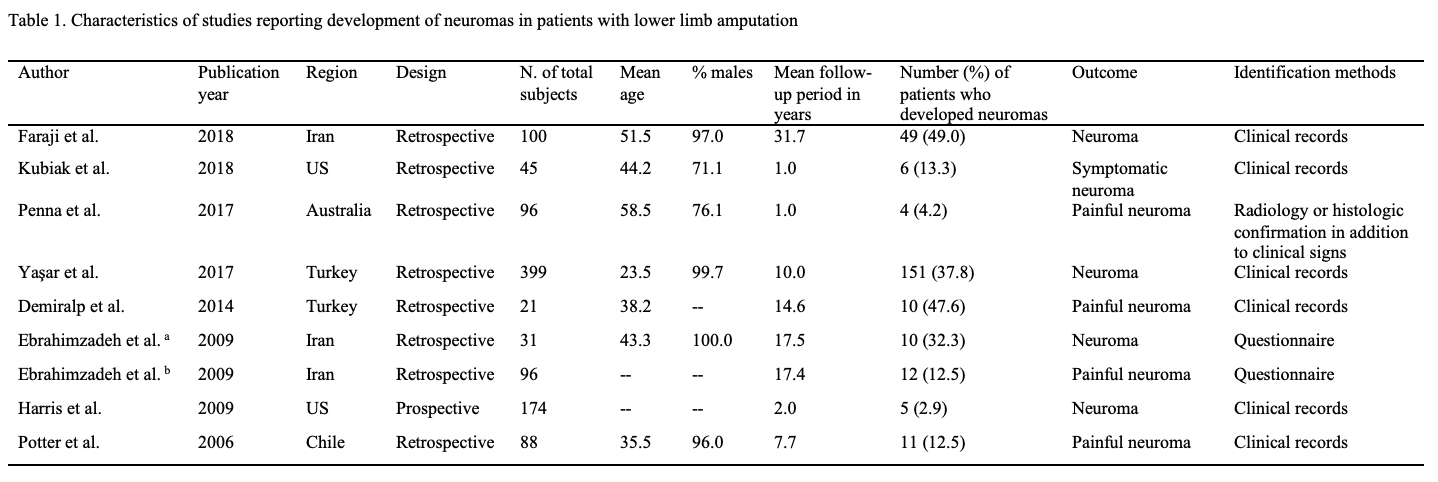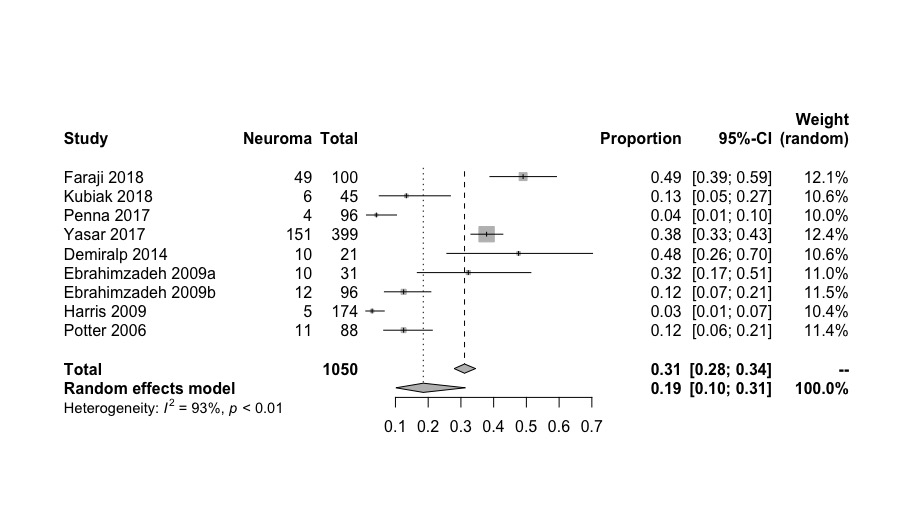Meta-analysis of Neuroma Incidence in Lower Limb Amputees
Yongxu J Huang, PhD1, Patrick E Assi, M.D.2, Brian C Drolet, MD2, Salam Al Kassis, M.D.2, Galen Perdikis, MD2 and Wesley P. Thayer, M.D., PhD2, (1)Vanderbilt University, Nashville, TN, (2)Vanderbilt University Medical Center, Nashville, TN
Introduction:
Neuroma formation following amputation constitutes a high-frequency morbidity in this patient population, which can limit the use of prosthetics and negatively affects quality of life. The incidence of post-amputation neuroma formation is variable across the available literature especially with limited available diagnostic tools and lack of sensitive imaging modalities. The objective of this study is to determine via systematic review and meta-analysis the incidence of neuroma formation that develops as a sequela following lower limb amputation.
Material & Methods: A systematic literature review was performed on PubMed. Studies reporting frequency of neuroma formation in patients with lower limb amputations were included. A meta-analysis was performed; a random-effects model was applied to adjust for the high heterogeneity and to calculate the pooled percentages of neuroma with 95% confidence intervals (95% CIs).
Results:
Nine studies consisting of 1,050 patients were included in this meta-analysis. Among the nine studies, the reported incidence of post-amputation neuroma ranged between 2.9% and 49%. The mean study follow-up periods range between 1 year and 31.7 years. The pooled percentage (95% CI) of lower limb amputees who developed neuromas was 19% (10%, 31%). In a sensitivity analysis including five studies with a follow-up period greater than or equal to ten years, the pooled percentage (95% CI) of lower limb amputees who developed a neuroma was 34% (23%, 48%). When the remaining four studies with a follow-up period of less than ten years were analyzed, the pooled percentage (95%CI) of neuroma incidence was 7% (3%, 15%).
Conclusions:
This meta-analysis demonstrates variable post-traumatic neuroma incidence reported in the literature. Subgroups analysis shows that neuroma incidence is significantly higher in studies with longer follow-up, which may help explain the heterogeneity among these studies. These findings suggest that neuroma formation following amputation is underestimated in studies with short duration follow-up. Further investigations of advanced diagnostic tools and imaging, in addition to longer follow-up, might help in the diagnosis and management of this highly morbid problem.


Figure 1. Meta-analysis of neuroma incidence in lower limb amputees

Figure 2. Meta-analysis of neuroma incidence in lower limb amputees
Back to 2021 ePosters
